Last-Minute NYC Holiday Gift Guide 🎁
We’ve created a holiday gift guide with presents for the intrepid New Yorker that should arrive just in time—

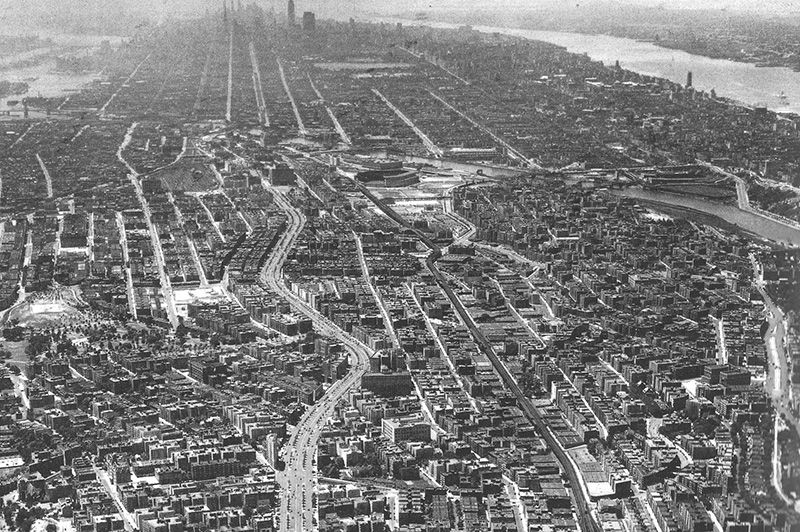
Photo via City-Data from Wikimedia Commons
In the present day, few outsiders would dare to venture into the Grand Concourse section of the Bronx, due to its notorious reputation as a dangerous neighborhood. But the area known as the “Champs-Élysées of the Bronx” is steeped in a rich cultural history, from its dark past as part of the Bronx Slave Market to its Paris-inspired roads. To find out why there is a German fountain in Joyce Kilmer Park, or why Edgar Allan Poe’s cottage was moved, read our top ten secrets of the Grand Concourse in New York City
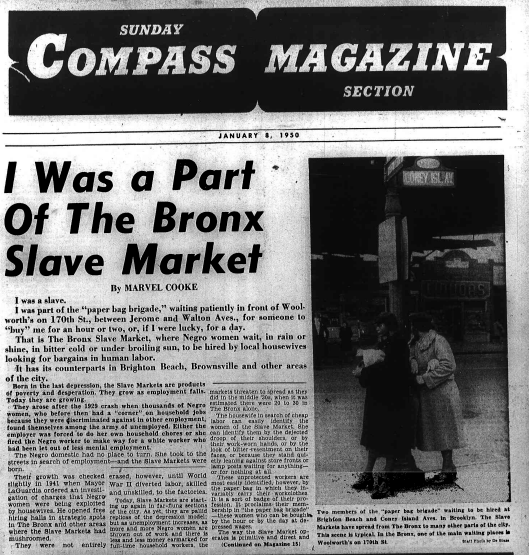
New York is not the first place that comes to mind when talking about slavery in America. But in early to mid 20th century, the Grand Concourse and other Bronx neighborhoods were home to the Bronx Slave Market. From the 1930s to the 1950s, African-American women and men would congregate on street corners in hope of finding employment by wealthy white citizens. If they were given jobs for the day, the labor was often physically demanding and they would only be paid 30 to 50 cents a day. Journalist Marvel Cooke wrote an exposé about the slave market for ‘Viewpoint Magazine’ in 1950.
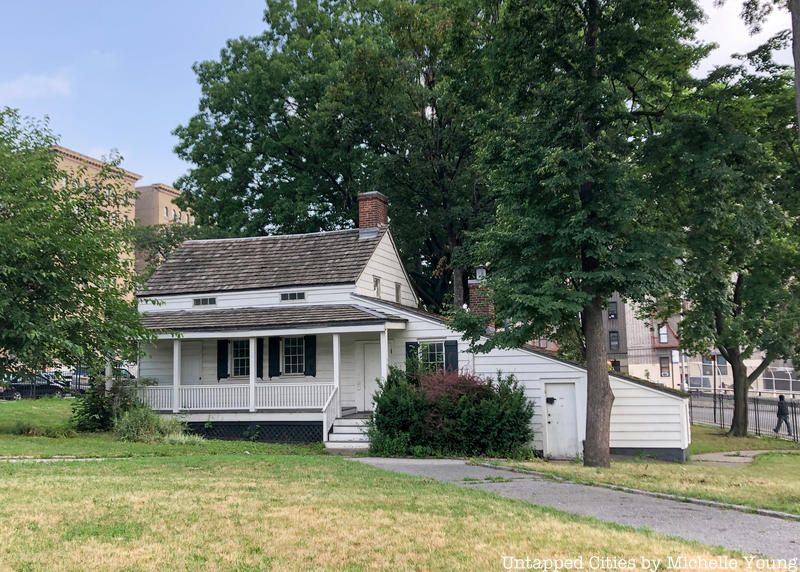
Situated on Kingsbridge Road and Grand Concourse is a modest farmhouse, seemingly out-of-place amongst its modern settings. The farmhouse was Edgar Allen Poe’s cottage, built around 1812 for the 19th century writer. From 1846 to 1849, Poe and his wife Virginia Clemm spent the last few years of their lives in the preserved cottage, originally located in Fordham. According to the Bronx Historical Society, Poe produced some of his most well-known works in the cottage, including ‘Annabel Lee’ and ‘The Bells.’
Before 1913, Poe Cottage was under different ownership until it was ultimately purchased by the city of New York in 1910. The city moved the cottage to Kingsbridge Road on November 13, 1913, where it has remained since its dedication in Poe Park. The cottage is available for tours from Thursday to Saturday.

Photo via City-Data from Wikimedia Commons
The Grand Concourse is also known as the “Champs-Élysées of the Bronx, which is what the road’s French designer, Louis Aloys Risse, intended when he designed it. Later, Risse would work for New York Central Railroad and would be appointed chief topographical engineer for the New York City government. The original intention for the Grand Concourse was to connect Manhattan to the Bronx, which was a bucolic juxtaposition to the hustle and bustle of the city.
Risse first conceptualized the thoroughfare in 1890, and construction began in 1894. By 1909, the Grand Concourse was completed and opened to traffic. It was built at the height of the “City Beautiful movement,” which sought to introduce old world grandeur to new cities. Risse’s design was based on the Champs-Élysées in Paris, but on a larger scale. The concourse, which is separated into three roadways, is four miles long and measures 180 feet across.
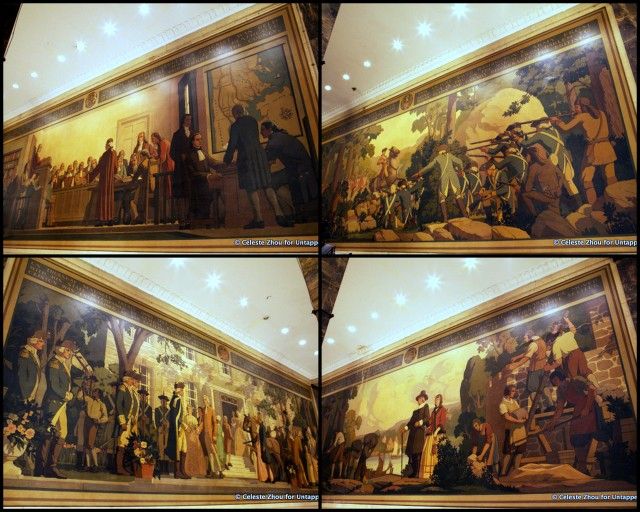
The Bronx County Courthouse is yet another example of the Art Deco style of architecture that was popular in the early 20th century. But what’s unique about the courthouse is not its facade, but what’s inside the building. There are four murals within the courthouse that depict important scenes in Bronx history, including a photo of the Bronx’s founder, Johannes Bronck landing in New York.
Other murals in the courthouse depict former president George Washington in the Bronx and a rendering of Van Cortlandt Park. Though the murals have always been in the courthouse, they were covered by offices. In 1988, then Bronx Borough President Fernando Ferrer put the murals back into public view.
The courthouse was also a film location for the hit Netflix show ‘Daredevil.’

The Loew’s Paradise Theater in Grand Concourse was built in 1929 and reflects the theater goers’ preference for an opulent movie watching experience. The theater was one of five theaters built by Loew and had the capacity to hold nearly 4000 people. It was one of the last theaters built in the Atmospheric style, which strayed away from the traditional boxy theater style, and instead transported patrons to exotic, outdoor European settings. This Grand Concourse theater was inspired by a 16th century Italian Baroque garden, restored to reflect its old grandeur in 2005. It is still used to show movies today.
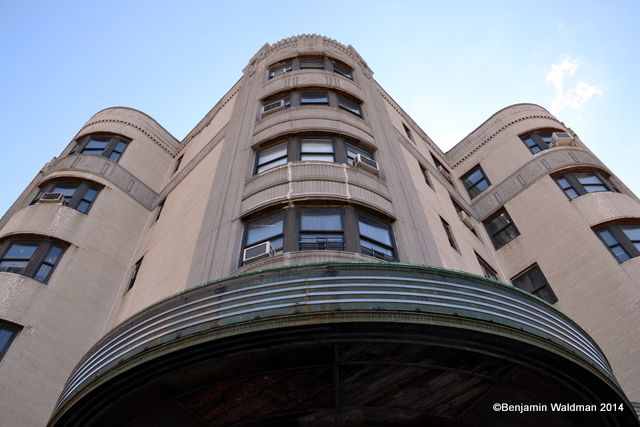
In 1937, famed architect Emery Roth designed 888 Grand Concourse, an Art Deco-style apartment building. Roth built a number of New York City’s buildings in the ’20s and ’30s, including the El Dorado Apartments and the San Remo. The building is located on the southeast corner of 161st Street, and has obvious characteristics of the Art Deco-architectural style, including a concave entrance vestibule lined with elaborate gold tiles and the lobby with an Art Deco compass pattern on the floor surrounding what was likely once a black and gold fountain.

The Concourse Plaza Hotel was built from 1922 to 1923, but began experiencing financial difficulties in 1957. Subsequently, the hotel was converted into a home for destitute families and later a senior citizen’s residence. In 2015, the No Longer Empty Curatorial Lab (NLE) held an art show in the abandoned Concourse Plaza Hotel. The show, was called NLE Lab: Intersecting Imaginaries, and featured art that captured the spirit of the Bronx through times of change.
One photo series showcased Bronx shops and their owners, while other exhibits depicted themes of domestic violence, sexuality and queer culture.

While walking through Joyce Kilmer Park, one will come across the Heinrich Heine Memorial, also known as the Lorelei Fountain. The elaborate marble fountain is dedicated to German poet and writer Heinrich Heine, who spent his entire life in Germany and France. So why might a fountain in the Bronx be dedicated to a man who has never set foot there?
In 1887, the Heine Memorial was set to be built in the writer’s hometown in Düsseldorf, Germany. There was a disagreement over the memorial’s design between Austro-Hungarian Empress Elisabeth and the committee responsible for building the memorial, subsequently halting its construction. The memorial was put off until 1888, when the committee announced plans to have it built by 1895. This time, there was debate about which German city in which to place the memorial. During this time, the Arion Society, a New York-based German singing society, expressed interest in the memorial. Ultimately, it was built in the Grand Concourse and unveiled on July 8, 1899.

Mount Hope Court, a 10-story (plus penthouse), 110-foot tall apartment building is located on the Grand Concourse in the Bronx and was completed in 1914. The New York Tribune praised Mount Hope Court as “a most imposing structure” and the New York Times admired how “its wide facade of light terra cotta stands out prominently from its high elevation.” Given the building’s location on a triangular block bounded by the Grand Concourse, Mount Hope Place, Monroe Avenue, and E. Tremont Avenue and its resemblance to a noted downtown edifice, Mount Hope Court was also dubbed the “Bronx Flatiron,” a term used even in its own advertising. A luxury building, each apartment consisted of six or seven rooms and building amenities included a rooftop garden with a pergola.
Among its residents was its developer Otto Schwarzler. By the 1950s it was known as the Medical Arts Building, reflecting its use by doctors for residential and professional purposes. In the wake of the South Bronx’s struggles, it was abandoned during the early 1970s but in 1982 was renovated and converted back to residential use as a publicly-subsidized affordable housing development and renamed the Concourse Flatiron. Look out for a mosaic in the Tremont Ave IND subway station that commemorates this triangular building. [Text by Jeff Reuben].

In 1915, businessman and former owner of the New York Giants Andrew Freedman died and set aside $1 million ($13.8 million in today’s dollars) from his $4 million ($93.6 million in today’s USD) estate to build The Andrew Freedman Home. The purpose of the home was to be a place where the formerly wealthy could retire with the luxuries to which they were accustomed. In 1924, the retirement home opened and was named a New York City Designated Landmark in 1992. The Andrew Freedman Home was converted into a daycare center and event space in 2012.
Next, read about 10 NYC Post Offices that Double as Art Galleries. Tweet the author, a Bronx native, @jen_bagcal.
Subscribe to our newsletter